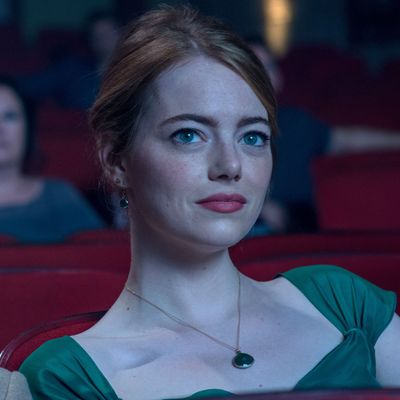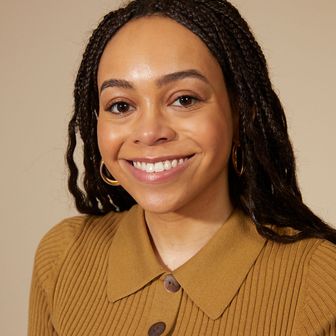
Warning: This post has heavy spoilers for La La Land.
In the five year fast-forward near the end of La La Land, Mia (Emma Stone) seems to have gotten everything she ever dreamed of: SheÔÇÖs a big-time Hollywood actress, a VIP on the studio lot where she used to work as a barista. The first hint that things havenÔÇÖt turned out exactly like we thought they would comes when we learn that Mia has a baby ÔÇö really? Then we meet the babyÔÇÖs father, a man who is emphatically not Sebastian (Ryan Gosling), the jazz musician with whom MiaÔÇÖs shared a rocky love affair over the course of the film. The relationship the musical┬áteases wonÔÇÖt actually come to fruition.
The ending makes it clear: Even though the couple spends most of┬áLa La Land together, the movie never really belonged to their love story. Still, itÔÇÖs surprising to watch a happy ending thatÔÇÖs essentially a breakup: When Mia and her new guy run into Seb in his whitewashed jazz club in the movieÔÇÖs last scene, she gives him one longing look then turns to follow her husband out the door, while Sebastian imagines the colorful life he and Mia could have had if theyÔÇÖd stayed together. La La Land tells its love story in vivid Technicolor, but the fantastical whimsy couldnÔÇÖt sustain all three parts of the m├®nage ├á trois of Mia, Sebastian, and their Los Angeles ambitions.
That final breakup is also a breaking of the mold; La La Land is fashioned after Old Hollywood musicals, most of which make sure to pair the guys and girls off just right. According to the template, its closing number should be a happily-ever-after resolution, not an acceptance of the coupleÔÇÖs diverging paths. But that just underscores that, dance steps aside, La La Land ultimately is not about Mia and SebastianÔÇÖs romance. The real romance was with the shimmer of dreams. ItÔÇÖs fine they donÔÇÖt end up together; in a movie thatÔÇÖs in love with that past, thatÔÇÖs the freshest thing La La Land has to offer.
In every song-and-dance number, La La Land fusses with its genre. The story adheres to some conventions of Golden Age Hollywood musicals, and dismisses others. (Director Damien Chazelle really milks the humor in moments when modern conventions disrupt into the genreÔÇÖs stylistic shorthands.) The boldest thing about La La Land is not the songs (because, come on, there are really only two good ones) but that it asks its audience to understand that a happy ending doesnÔÇÖt require its leads to still be in love. Sebastian and Mia live two parallel love stories: She has movies and he has jazz. They both end up with what they wanted in the end, and the movie doubles down on their separate journeys. The movie doesnÔÇÖt give us a dramatic ÔÇ£I choose meÔÇØ monologue; it has the good manners to just to let the main characters be quietly selfish.
Besides, that kind of big declaration wouldnÔÇÖt fit in this movie, which hints throughout its run time that the two leads werenÔÇÖt exactly made for each other. Mia and Sebastian are a dazzling couple when they dance, but not when they do much else. They overdress to go to the movies and guilt each other into being more ambitious. Even that last stunning sequence of SebastianÔÇÖs idealized life with Mia ÔÇö itself a nod to the dream ballets of earlier musicals ÔÇö leaves his own life incomplete; nothing, not even a Technicolor fantasy, could let both of them have it all together. Sebastian dreams up Mia achieving modest success, but even in that wildest of dreams, heÔÇÖs without his jazz club. ItÔÇÖs only in real life, when Mia returns to her taste in dark-haired, serious men (her husband looks remarkably similar to the guy she was dating at the beginning of the film) that she can have everything she wants. La La LandÔÇÖs conclusion seems sad, but really, itÔÇÖs just uncharacteristically subtle.


